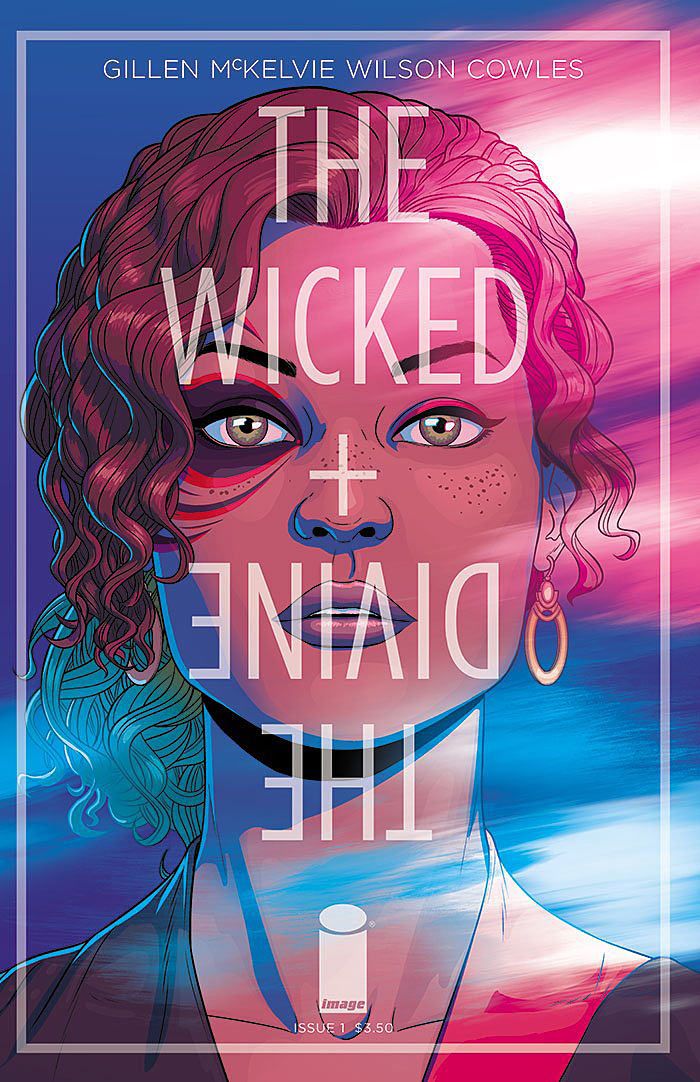The first issue of "The Wicked + The Divine" is as exquisite and intelligent as I expected -- but delivered in a way I definitely did not. (It ends in a courtroom?) Kieron Gillen and Jamie McKelvie's latest collaboration is a book that believes you can have big ideas about fame, worship and art, and still look beautiful while discussing them. It's one of the smoothest, most self-assured first issues I've ever read.
The premise is thus: every 90 years or so, the gods return in what's known as the Recurrence. For two years, they live the high life in never-ending spotlight -- then they have to die. When the story opens, there hasn't been a Recurrence since 1923, and 2014's is just kicking off.
"The Wicked + The Divine" #1 eschews the first-issue-as-TV-pilot approach, skimming over most of the major players and never explicitly laying out what its premise makes possible. Instead, after a brief flashback to the 1920s Recurrence, it zeroes in on two characters: Laura and Luci. Laura is the everywoman and narrator, a regular girl from South London who wants godhood for herself. Her narration at Amaterasu's concert is incredibly fun, all excess and aspiration, and her ingenue aspects are nicely tempered by an eye for BS. In almost every way, it looks like she'll be a fine center of the story -- but she's not the driver of the action in issue #1.
That honor goes to Luci, and whether or not you like the issue will depend pretty strongly on whether you like following her around. The androgynous and white-suited incarnation of Lucifer, Luci is an equal opportunity asshole who calls an unbeliever the "Empress of Stupid" and then mockingly challenges a believer to "crucify me." Gillen's dialogue is relentlessly sly, with pot shots and allusions -- "I am not a jealous god" -- that made the Catholic school kid in me grin. But the devil, as they say, is really in the details. McKelvie's uncanny eye for facial expressions ultimately makes the character work. I've seen many artists pull off a face that looks mocking, or self-satisfied, but visually conveying "nihilistic troublemaking" and "being venomous out of curiosity" is just something else entirely. Matthew Wilson ices the cake on colors: white-trash eye makeup has never looked this smug or satanic.
Though a series about pop stars and young gods might seem like the perfect place for hyperbole, there are shockingly few artistic fireworks in this issue. Instead, "The Wicked + the Divine" does its showing off in page after page of dense, precise paneling. The craftsmanship is just unreal, and it's easily as impressive as a blow-your-mind splash page. As I said above, McKelvie knows how to draw a readable, realistic person in mid-conversation, and his talking-head panels are a master class in human expressions.
There is a showstopping exception to the fireworks rule: Wilson's colors for Amaterasu's concert. He transforms what's essentially a wailing ginger in Stevie Nicks' hand-me-downs into something utterly splendid and incandescent. When Laura describes the concert as what Masses and orgasms aspire to be, I could see it in the colors.
All this aside, the structure might put some readers off. Dense as it is, the issue actually moves pretty slowly into its mythology. The mechanics of the Recurrence aren't covered, merely hinted at. Instead of explaining, Issue #1 spends pages on a theological debate with a skeptical journalist called Cassandra -- which tells me everything I need to about the series' priorities. To my delight, "The Wicked + the Divine" is very much a child of '90s Vertigo that's gotten past the need to slay its fathers. I can't wait for 50 more issues of existential debate.
It can be tough for highly anticipated titles to live up to the hype, but an issue this beautiful and sure of itself is bound to please almost anyone. With intriguing questions, interesting characters and pretty unmatched craft, "The Wicked + The Divine" #1 is...oh, just repeat the adjectives in the title.

